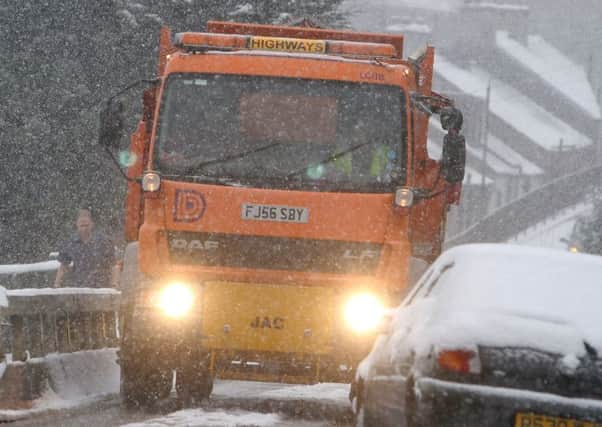FEATURE: Behind the scenes at Derbyshire County Council’s gritting headquarters


There are 3,300 miles of road which fall under the responsibility of Derbyshire County Council - so how do staff decide where to grit and when?
During the colder months, the council provides 24 hour cover, seven days a week, to respond to extreme weather conditions using specialist gritting vehicles and snow ploughs.
Advertisement
Hide AdAdvertisement
Hide AdHowever, according to officers, the authority cannot treat every road in the county, and therefore tough decisions have to be made about which roads should made the grade when it comes to gritting.


Despite this, speaking to the Derbyshire Times, Derbyshire County Council’s principal engineer for highways, Glyn Dutton, insisted that the council still manages to treat half of the county’s roads, which is more than other councils.
Prioritise
“We have got 5,500 kilometres of road and we can’t grit them all, so we have to prioritise,” he said.
“We’ve done an exercise where we have split the network into a primary network, which we give priority, a secondary network, and a tertiary network.
Advertisement
Hide AdAdvertisement
Hide Ad“Because we have to formally identify the primary routes, and everybody wants their roads gritting, we do lay down criteria of what formulates a primary route.
“We do these, any time of day, 24/7, generally from November to the end of March, as that is the accepted winter period, but it can extend.”
The council’s outlined primary routes entail around 1,000 miles of Derbyshire’s roads and include all major A and B roads, major bus routes and roads outside emergency service stations and hospitals.
Secondary routes, which cover a further 550 miles of road, are treated by gritting teams during the working day and cover well-used main roads through villages and estates and residential roads not covered on the primary routes.
Advertisement
Hide AdAdvertisement
Hide AdTertiary routes are not normally gritted by the council, and are usually treated in bad weather by farmers who use tractor ploughs.
These routes cover roads to isolated villages and include roads to schools and nursing homes not covered by primary or secondary plans. The council has 31 gritter drivers and supervisors on stand by at any one time as well as a team of ‘action officers’ that pull the strings when bad weather hits.
Specialised service
These officers work around the clock with bespoke software and tailor-made Met Office weather forecasts to plan and dictate when roads are treated.
“Some people look at the apps on their mobile phones and things, but we have a very specialised service that goes into a lot more detail, tailored specially for us and what we require,” said Alan Tulloch, one of the winter action officers.
Advertisement
Hide AdAdvertisement
Hide AdIn the morning, we get a summary that is tailored to Derbyshire County Council.
“This gives us a heads up first thing, it gets prepared and actually gets emailed to us at about 6:30am. That’s our indication, we need to be alert. That’s the first point where we might speak to the operational side and say look, something might be happening today.”
As well as getting information from the Met Office every morning, the officers also receive detailed two to five day forecasts each day that indicate what the weather is expected to be like over the course of the week.
“This gives us an indication of the temperatures that we are likely to experience at different periods, and whether there is going to be snow. But this is only at that snapshot in time,” Added Alan. “At the same time, we get something a bit more specific, there is a hazard summary that details about ice, frost, snow, fog and strong winds.
Advertisement
Hide AdAdvertisement
Hide Ad“We won’t do one consistent county wide action at times, we will look at how its going to affect each area.”
On top of the detailed forecasts the team receives from the Met Office, council officers also use a unique software package that gives a live round-the-clock weather forecast.
“On this, we get to see the different types of precipitation that is coming across,” said Alan.
“Mixed snow, rain snow, powder snow, we get to see that. We also get to see the precipitation types which is important to us, as if it is going to be too heavy it will wash off the grit.”
Don’t miss the second part of our special report next week when we head out on the roads with the gritters.